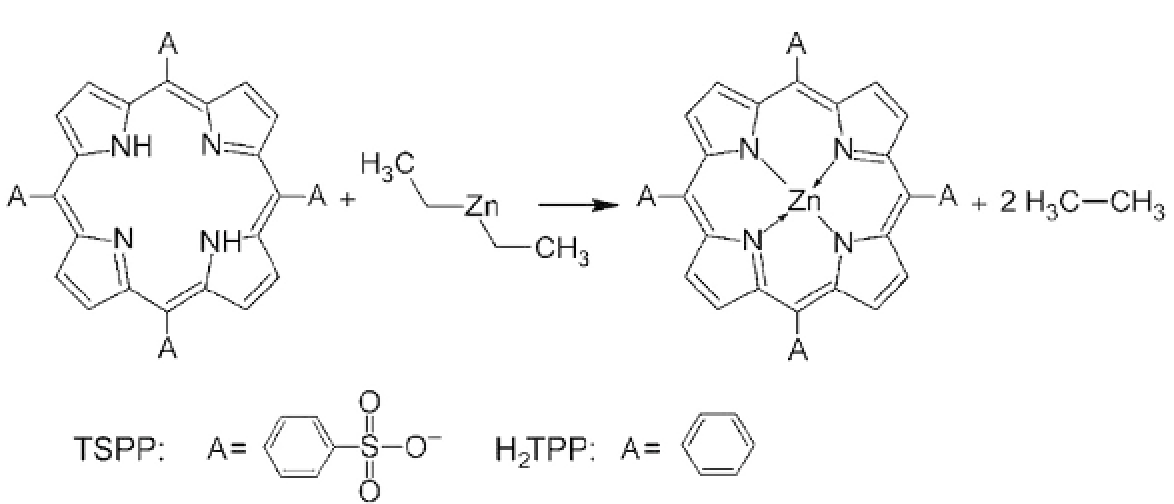Biomedical Engineering Reference
In-Depth Information
FIGURE 16.13
Chemical reaction between diethylzinc and porphyrins during ALD. Reprinted from Ref.
117
. Copyright
© 2009, with permission from Wiley-VCH.
materials are to be processed. Indications for
infiltration by ALD had been observed earlier
[115]
and considered to be a drawback of the
process for coating of polymers. For a more
controlled and precise design of materials,
detailed investigations and understanding of the
chemistry and physics behind the observed
phenomena are indispensible.
Site-specific reactions of the ALD precursors
with bio-organic functionalities are gaining
importance
[116]
, but research has been scanty.
For example, after processing porphyrin with
diethylzinc (DEZ), a site-specific reaction of the
precursor with the pyrrolic-NH groups was
observed (
Figure 16.13
)
[117]
. This result indi-
cated that primary and secondary amines are
potential reaction sites for the Zn precursor. Fur-
ther studies have shown that the infiltration,
particularly with DEZ, can also be beneficially
applied to produce nanostructures from block
copolymers
[118]
or indicated that C
=
C and
ester bonds are in some cases reactive with TMA
[119, 120]
. Even C-F bonds appear reactive with
ALD precursors, at least with DEZ
[121]
. How-
ever, one has to consider that identical functional
groups have differing chemical reactivity in dif-
fering chemical environments. Therefore, the
mentioned few experiments are only a small
indicator for possible chemical modifications.
16.4 SUMMARY
The application of atomic layer deposition to
biomaterials or for mimicking biological pro-
cesses is an emerging research direction. It is
apparent from the published work that ALD
comes into focus whenever the other coating
technologies reach their limits. A very obvious
example is the delicate structure of butterfly
wings. ALD is the method of choice to uniformly
coat all visible and invisible surfaces as long as
those are accessible by the vaporized precur-
sors. Further examples of the application of the
ALD process include mineralization processes
within protein-based structures. The lifetime of
the metal-organic molecules is increased, allow-
ing the molecules to diffuse into soft matter and
react with functional groups within the bulk.

